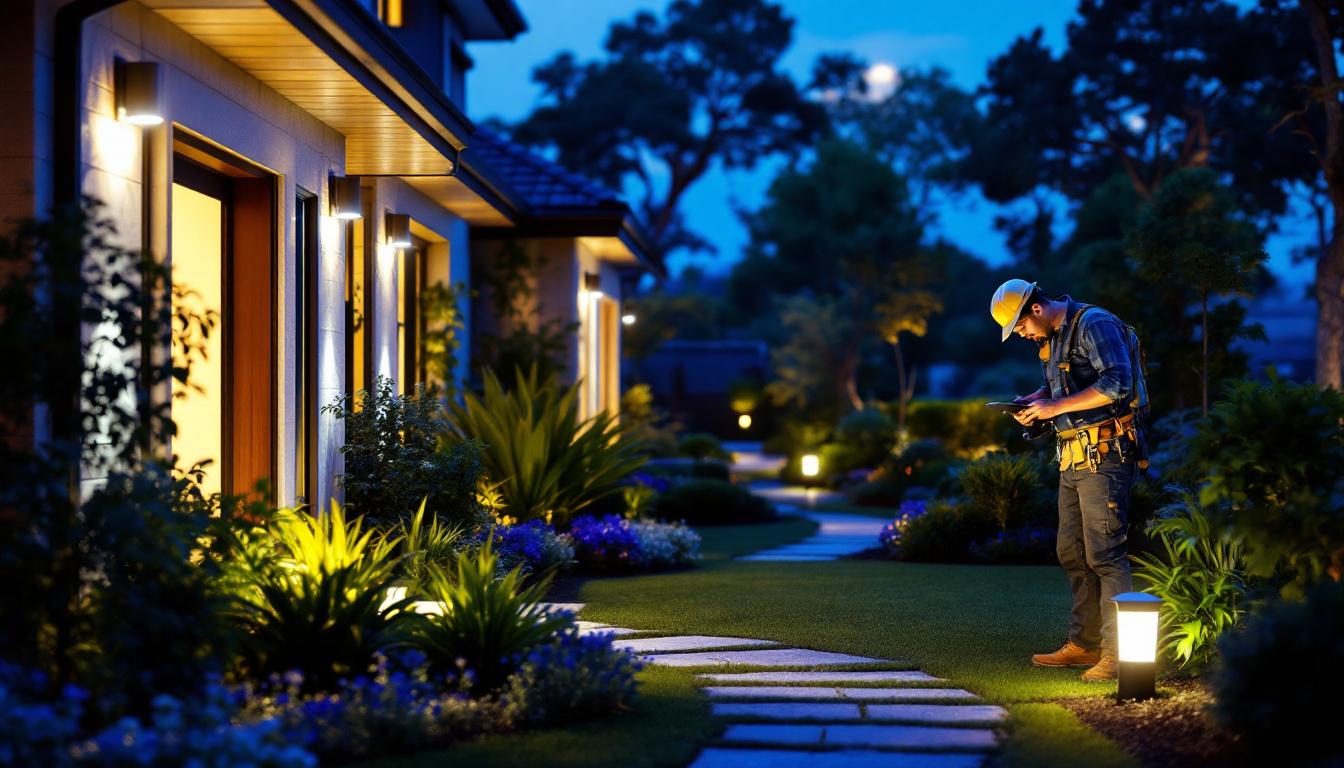
As the demand for energy-efficient lighting solutions continues to grow, LED retrofitting has become a popular choice among contractors and building owners alike. However, navigating the complexities of compliance can be challenging. This article aims to provide lighting contractors with essential information regarding LED retrofit recessed lighting, focusing on compliance standards, installation practices, and the benefits of making the switch.
LED retrofit recessed lighting involves replacing traditional incandescent or fluorescent fixtures with energy-efficient LED options. This process not only enhances the quality of light but also significantly reduces energy consumption. For lighting contractors, understanding the technical aspects and advantages of LED retrofitting is crucial for successful project execution. The transition to LED technology represents a pivotal shift in the lighting industry, driven by both environmental considerations and the demand for cost-effective solutions.
One of the primary benefits of LED retrofitting is energy efficiency. LED lights consume significantly less power than their incandescent counterparts, leading to lower utility bills. Additionally, they have a longer lifespan, which reduces the frequency of replacements and maintenance costs. This longevity not only saves money but also minimizes waste, aligning with sustainable practices that are increasingly important in today’s eco-conscious market.
Moreover, LED technology offers superior light quality. With options for dimming and color temperature adjustments, contractors can provide customized lighting solutions that enhance the ambiance of any space. This flexibility is particularly appealing to clients looking for tailored lighting designs. The ability to choose between warm and cool light tones allows homeowners and businesses to create the perfect atmosphere for different activities, whether it’s a cozy dinner or a vibrant workspace.
There are various types of LED retrofit kits available in the market, each designed for specific applications. Some kits are designed for direct replacement, allowing for a straightforward swap of existing bulbs or fixtures. Others may require additional components, such as trim kits or housings, to ensure proper fit and functionality. Understanding the different types of kits helps contractors select the right solution for their projects, ensuring compatibility with existing infrastructure while maximizing efficiency.
In addition to standard retrofit kits, there are also specialized options designed for unique environments, such as damp-rated kits for bathrooms or outdoor spaces, and high-lumen kits for commercial applications where bright, effective lighting is essential. Contractors should be aware of these specialized kits to better meet the diverse needs of their clients, ensuring that every installation not only meets aesthetic expectations but also adheres to safety and performance standards. This knowledge can significantly enhance a contractor’s reputation and lead to more referrals and repeat business.
Compliance with local and national regulations is essential for lighting contractors involved in LED retrofitting. Various codes and standards govern the installation and operation of lighting systems, and failure to adhere to these can result in penalties or project delays.
Energy codes, such as the International Energy Conservation Code (IECC) and ASHRAE standards, set forth requirements for energy efficiency in buildings. These codes often dictate the minimum performance levels for lighting systems, including wattage limits and efficacy ratings.
Contractors must familiarize themselves with the specific energy codes applicable in their jurisdiction. This knowledge ensures that the retrofitting process meets regulatory standards and contributes to overall energy savings for the building owner. Additionally, staying updated on any revisions to these codes is crucial, as energy efficiency standards are continually evolving to promote sustainability and reduce carbon footprints. Engaging with local energy efficiency programs can also provide contractors with valuable insights and resources to navigate these regulations effectively.
In addition to energy codes, safety standards such as those set by Underwriters Laboratories (UL) and the National Electrical Code (NEC) must be followed. These standards address the safety and performance of electrical products, ensuring that installations are safe and reliable.
Contractors should verify that all LED retrofit products are UL-listed and comply with NEC requirements. This not only ensures safety but also provides peace of mind to clients regarding the quality of the installation. Furthermore, understanding the implications of these safety standards can help contractors minimize risks associated with electrical hazards, such as short circuits or fire hazards. Regular training and certification in safety practices can enhance a contractor’s credibility and demonstrate a commitment to maintaining high standards in their work, ultimately leading to increased client trust and satisfaction.
Proper installation is critical to the performance and longevity of LED retrofit recessed lighting. Adhering to best practices not only enhances the effectiveness of the lighting system but also minimizes the risk of issues arising post-installation.
Before beginning any retrofit project, contractors should conduct a thorough assessment of the existing lighting system. This includes evaluating the current fixtures, wiring, and overall layout. Understanding the specific needs of the space will help in selecting the most suitable LED retrofit option.
Additionally, it is essential to communicate with clients about their lighting preferences and goals. This dialogue can guide the selection of color temperatures, dimming options, and other features that contribute to the overall satisfaction of the project.
When installing LED retrofit recessed lighting, following the manufacturer’s instructions is paramount. This includes proper wiring, securing fixtures, and ensuring that all components are compatible. Depending on the type of retrofit kit, additional steps may be required, such as installing new trim or adjusting the housing.
Moreover, attention to detail during installation can prevent common issues such as flickering lights or inadequate illumination. Ensuring that fixtures are correctly positioned and aimed will maximize the effectiveness of the lighting design.
Once the installation is complete, contractors should conduct a thorough inspection to ensure everything functions as intended. This includes checking for any flickering, dimming issues, or other anomalies that may indicate a problem.
Educating clients about their new LED retrofit recessed lighting is equally important. Providing guidance on how to operate dimmers, adjust settings, and perform basic maintenance can enhance the user experience and satisfaction.
Additionally, informing clients about the energy savings and environmental benefits of LED technology can reinforce their decision to retrofit. This knowledge empowers clients to appreciate the value of their investment and encourages them to advocate for energy-efficient solutions in the future.
While LED lights are known for their longevity, occasional maintenance may still be necessary. Contractors should advise clients on how to care for their new lighting systems, including cleaning fixtures and checking for loose connections.
In the event of issues, having a troubleshooting guide can be invaluable. Common problems such as flickering or dimming can often be resolved with simple adjustments or replacements, and contractors should be prepared to offer support when needed.
One of the most compelling reasons for lighting contractors to embrace LED retrofitting is the positive environmental impact. LED technology significantly reduces energy consumption, which in turn lowers greenhouse gas emissions associated with electricity generation.
By switching to LED lighting, buildings can achieve substantial energy savings. This reduction not only benefits the bottom line but also contributes to a decrease in the carbon footprint of the facility. For contractors, promoting these benefits can be a powerful selling point when discussing retrofit projects with potential clients.
Furthermore, many regions offer incentives and rebates for energy-efficient upgrades, making LED retrofitting an even more attractive option for building owners. Contractors should stay informed about available programs to help clients take advantage of these opportunities.
As lighting contractors upgrade to LED technology, it is essential to consider the disposal of old fixtures. Many traditional lighting products contain hazardous materials, such as mercury in fluorescent bulbs, which require special handling and disposal methods.
Contractors should educate themselves about local regulations regarding the disposal of old lighting products and promote recycling programs whenever possible. This commitment to sustainability not only enhances the contractor’s reputation but also aligns with the growing demand for environmentally responsible practices in the industry.
The field of LED technology is constantly evolving, with new advancements emerging regularly. Staying informed about these trends can give contractors a competitive edge and ensure they are providing the best solutions for their clients.
One of the most significant trends in lighting technology is the rise of smart lighting solutions. These systems allow for remote control and automation, enabling users to adjust lighting settings based on their preferences and needs. Incorporating smart technology into LED retrofitting can enhance the functionality and appeal of lighting systems.
Contractors should familiarize themselves with the various smart lighting options available, including compatible fixtures and control systems. This knowledge can help contractors offer comprehensive solutions that meet the evolving demands of clients.
As LED technology continues to advance, new products with improved efficiency and performance are regularly introduced to the market. Staying updated on these innovations allows contractors to recommend the latest and most effective solutions to clients.
Additionally, understanding advancements in color rendering, dimming capabilities, and energy efficiency ratings can help contractors make informed decisions when selecting products for retrofit projects.
LED retrofit recessed lighting presents a valuable opportunity for lighting contractors to enhance their offerings while promoting energy efficiency and sustainability. By understanding compliance standards, installation best practices, and the benefits of LED technology, contractors can successfully navigate the complexities of retrofitting projects.
As the industry continues to evolve, staying informed about trends and advancements will be crucial for maintaining a competitive edge. Embracing the shift toward LED technology not only benefits contractors and their clients but also contributes to a more sustainable future for the lighting industry as a whole.
Ready to elevate your lighting projects with the highest quality LED retrofit recessed lighting? Look no further than LumenWholesale. Our spec-grade lighting products are designed to meet the rigorous demands of any retrofit project, ensuring compliance, efficiency, and customer satisfaction. With unbeatable wholesale prices and the convenience of free shipping on bulk orders, you can trust LumenWholesale to provide the best value without any hidden fees. Don’t compromise on quality or cost—choose LumenWholesale for your lighting needs and make your next project shine. Wholesale Lighting at the Best Value.

Discover how the 15 Watt Bulb Type B can revolutionize your lighting projects by offering energy efficiency and longevity.

Discover the top strategies lighting contractors use to enhance outdoor spaces at night.
Discover the top strategies lighting contractors use to maximize efficiency and performance with outdoor LED flood light bulbs that are 150-watt equivalents.

Explore the innovative world of outdoor LED light strips powered by solar energy.